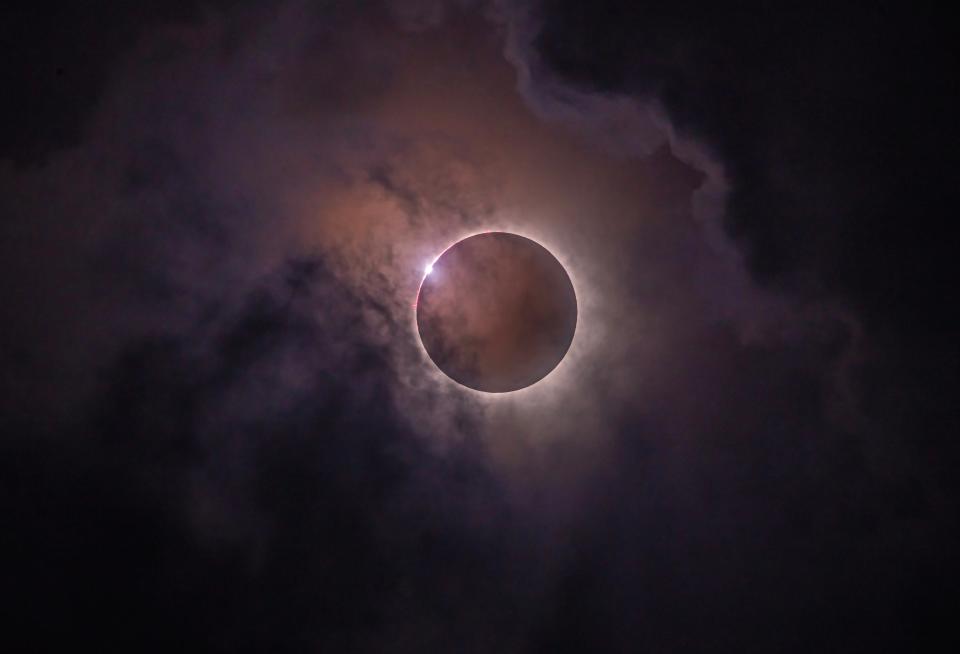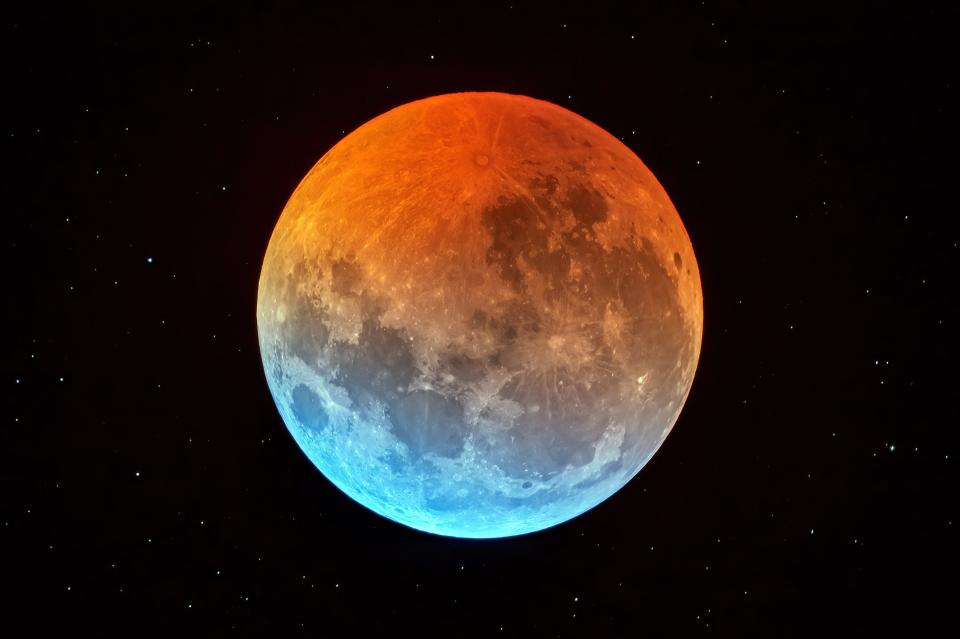Backyard Universe: The April eclipse and looking ahead to future ones both solar and lunar
Just plain lucky — that’s what my wife Ann and I were back on April 8.
After traveling to Fredericksburg, Texas, earlier this month to view and photograph the total solar eclipse, a band of clouds covered much of the Texas hill country on April 8.
The forecast for sky conditions was looking dismal in the days prior to the eclipse and many of the 225 or so people on our eclipse tour to Texas probably wrote off seeing the eclipse.
I was one of them, but tried to maintain some hope. It was my sixth total eclipse of the sun, and I was able to see and photograph the previous five with little or no interference from clouds. Although our sky was covered with clouds on eclipse day, those clouds thinned enough to permit some memorable views and pictures from the event. As the total phase of the eclipse ended, I felt more lucky than awestruck. I could hardly believe we saw any part of it. Sure, it would have been better under a perfectly clear sky, but everyone there seemed satisfied, especially those seeing their first total solar eclipse.

Planning for the next eclipse
As with all total solar eclipses, the first question asked afterward is, “When and where can I go to see this again?”
Since the next total eclipse of the sun won’t cross the continental U.S. for another 20 years, and since I’m pushing 71 years old, the eclipse a few weeks ago could be my last, especially if I want to see another one from the United States.
On Aug. 23, 2044, a total eclipse will cross Montana and the Dakotas, but just a year later, on Aug. 12, 2045, another tracks from the western U.S. and the Gulf Coast states to Florida.
But I don’t have to wait that long if I want to see the moon snuff out the sun and not be in my 90s. I’ll just have to travel way further than Texas.
On Aug. 12, 2026, the moon’s shadow will sweep across Greenland and Iceland before creating what should be a wonderful sunset eclipse (if skies are clear) over the Mediterranean off the coast of Spain. If we miss that one, we can look at Aug. 7, 2027, when an extremely long total eclipse sends Luxor, Egypt, into darkness for six minutes and 23 seconds. The longest duration of any total solar eclipse is 7.5 minutes. The 2027 eclipse will be the longest in 87 years.
As far as looking for the next total solar eclipse visible from the Fayetteville area, circle May 11, 2078, on your calendar.

Lunar eclipses from North Carolina
That Texas eclipse I almost didn’t see and the others mentioned here are all total eclipses of the sun. But what about when the moon is eclipsed?
Lunar eclipses happen when the shadow of Earth falls on the face of the moon.
Unlike a solar eclipse when seeing the total eclipse means traveling to a narrow track at some usually distant location, a lunar eclipse can be seen from anywhere the moon is visible at eclipse time, or, weather permitting, over half of the earth. Rather than a precious few minutes of visibility, a total eclipse of the moon can be total for as long as an hour and 47 minutes.
There’s a total lunar eclipse coming up early on the morning of March 14, 2025, and, given clear skies, the entire eclipse will be visible from the southeastern U.S.
Then again on March 3, 2026, another total lunar eclipse happens. This time, however, about the time the eclipse becomes total, the moon will be setting minutes later. We miss most of the total eclipse and the outgoing partial phases.
An almost total eclipse of the moon gets cranked up around 9:23 p.m. on the night of Aug. 27, 2026, with all but a tiny sliver of the moon immersed in the Earth’s shadow at mid-eclipse which comes after midnight.
Lunar eclipses are slow, easy to observe, colorful events. Total solar eclipses, while fleeting and only visible from a narrow path on Earth, are arguably the most spectacular experience nature can serve up.
It’s long been a head-scratching moment for me when I ask someone if they have ever witnessed a total solar eclipse — and they reply, “I think so."
If they had ever been totally within the moon’s shadow under a clear sky they would know it. They would vividly remember where they were and who they were with from that day forward.
If you have a question about astronomy send it to Backyard Universe, P.O. Box 297 Stedman, NC 28391 or email johnnyhorne937@gmail.com.
This article originally appeared on The Fayetteville Observer: Backyard Universe: When is the next solar eclipse and lunar eclipse?

